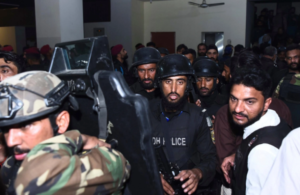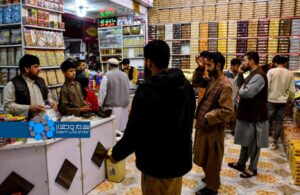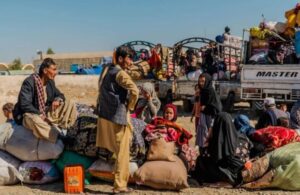“Life has never been easy for me, and I’ve never been able to get by it. This leg has been the greatest hardship of my life,” says Zohra, who lost one of her legs at the age of two due to a landmine explosion left behind from the war.
Now, 30 years old, Zohra says that losing her leg has been the greatest pain in her life, constantly haunting her. “Even in academic environments like school and university, I was always taunted because of my disability. At work, I was always seen as ‘the disabled person’; despite having as much talent as others, I was never given the same opportunities.”
This report includes interviews with 13 women with disabilities over the age of 20, and the mothers of three girls with disabilities aged 10 to 15. The report aims to provide an overall picture of the living conditions of women with disabilities, focusing on their access to education, healthcare, and employment opportunities.
Of the 16 women and girls with disabilities interviewed in this report, 11 became disabled as a result of landmine explosions left behind from the war, while five were born with disabilities.
Access to education, healthcare, and job opportunities
In Afghanistan, where most citizens already struggle to access basic free services and job opportunities, having a disability in this ‘traditional’ society presents an even greater barrier to benefiting from social privileges.
The women interviewed in this report highlight the significant obstacles they face in being accepted and thriving in society. These include being taunted, pitied, underestimated, excluded, and harassed, which hinder their ability to live normal lives and develop their potential.
Out of the 16 women and girls with disabilities featured in this report, 8 have been unable to access educational services or secure employment due to their disabilities. Of the 8 who did manage to access education, 4 have completed undergraduate degrees, 2 have finished up to the 12th grade, and 2 others, in addition to graduating from school, have acquired professional skills.
14-year-old Halima, who is paralyzed in both legs, explains that her physical condition and her family’s poor economic situation have prevented her from attending school, leaving her illiterate. She shares, “I’ve been like this since birth, and it hasn’t improved. My younger brothers also have leg disabilities. Our financial situation is weak, so we couldn’t afford to go to school.”
In addition to the limited access to public educational services, the inability to secure employment is another significant challenge for women with disabilities in Afghanistan.
Esra, a 23-year-old who lost both her legs to a landmine explosion in childhood, says that despite overcoming many difficulties to complete her education, she has not been able to find a job. “I try not to lose my spirit; I encourage myself, but my efforts often go in vain. Many people don’t see my level of education; they only focus on my disability.” Esra notes that wherever she applies for a job, she is viewed as a needy and helpless person.
Another aspect of the marginalization faced by women with disabilities in Afghanistan is their lack of access to standard, free healthcare services. Zohra, who has had to cover her medical expenses throughout her life, says, “My family’s financial situation has never been strong enough for me to take proper care of myself and get the right treatment, as I have been responsible for supporting the entire family. Now that more than 30 years have passed, my knee still locks up when I walk. The doctor told me there are still three fragments left in my leg.”
Interviewees in this report identify several major challenges hindering their ability to find stable employment, including being underestimated, suppression of skills, job limitations, negative public attitudes, and lack of special accommodations for people with disabilities.
Sociologists point to the absence of special facilities for women with disabilities as a significant reason for their exclusion from educational and employment opportunities. Zakaria Barekzai, a sociologist, states, “We need to build capacities for these individuals so they can work and support themselves throughout their lives. Their skills should be developed, and the government has a responsibility to provide opportunities and facilities that enable them to work more easily.” Barekzai adds that instead of focusing on pity, efforts should be made to provide the necessary accommodations and professional training, allowing disabled individuals, particularly women, to focus on their strengths with confidence.
Challenges and barriers to forming a married life
Among the 13 women with disabilities over the age of 20 interviewed for this report, 6 are married, while 7 have yet to find a partner for a married life. They report that society believes women with disabilities cannot handle the responsibilities of marriage.
Soraya, who is visually impaired and previously taught at a private university in Herat, expresses her desire to marry but says that her disability has deterred potential partners. “People think we are a burden; that’s why society doesn’t accept us.”
Some women with disabilities also recount facing strong opposition from their partners’ families both before and after marriage due to their disabilities.
Zohra, a 34-year-old who lost a leg in the civil wars, explains that after her marriage, her husband’s family rejected them. “When my husband took the step to marry me, his family didn’t want me. They said I was a disabled person who couldn’t support a family and that they left us all alone because they wanted to see how our life would turn out,” she said. Now, Zohra has three children and carries a significant portion of the family responsibilities.
Among the 6 married women interviewed, 4 are married to individuals with disabilities, and one is married to a non-disabled person.
Nooriya, a resident of Kabul with a disability in one leg, says her physical condition prevented her from marrying the man she loved. “I loved and wanted to marry my cousin, but he didn’t accept me because I’m disabled. After waiting for a long time, I married someone else, and my husband is also disabled. Initially, my in-laws said I had no legs, was anemic, and wouldn’t have children.”
Ahmad Rashid Sediqi, a university professor and sociologist, asserts that the government, religious scholars, civil society organizations, and media all have a responsibility to eradicate the incorrect perception of disability from society. He explains, “Disability is not synonymous with incapacity. If a person is missing a part of their body, it doesn’t mean they are wholly incapable. There are people without limbs who have excellent skills. Disabled women can raise children with high abilities.”
According to Sediqi, rather than belittling individuals with disabilities, everyone should support these individuals’ active participation in society without viewing them as incapable.
How can families and community empower people with disabilities?
Despite the marginalization and underestimation of individuals with disabilities in the society, some individuals say that support and encouragement from their families make societal challenges and pressures more manageable and bearable.
Farzana, a resident of Kabul who was born blind, shares that unlike the isolation experienced by many other disabled women, family encouragement has allowed her to complete her education. She says: “My disability has had no negative impact on me. It was the support from my family and teachers that helped me succeed. This condition has not harmed my spirit.”
Karima, another Kabul resident who lost a leg due to cancer, says, “I don’t worry about losing a leg. I neither worry nor isolate myself from others. I don’t even feel it much because I have good, happy children, and I’ve never let my disability affect my mental well-being.”
Some women with disabilities in this report, who have been seen as a burden by their families, say they grew up with such beliefs and are so deterred by negative public perceptions that they hesitate to even go outside.
Jamaluddin Solaimani, a sociologist, emphasizes that to facilitate the active and positive participation of women with disabilities in society, support should extend from the home to the broader community. He says, “Priority should be given to their rights and respect everywhere. Providing fair livelihood and fulfilling their rights encourages and inspires them. Moreover, access to healthcare, education, and employment opportunities should be ensured to prevent them from facing difficulties.”
According to Solaimani, if one of the five senses of a person with a disability is impaired, investments should be made in developing their remaining senses.
Breadwinners and unemployment
Despite the challenging conditions in Afghanistan, some women with disabilities take on the role of breadwinners for their families. Six of the interviewees in this report, who were employed before the collapse of the Republic, now find themselves unemployed and struggling with both economic hardship and depression.
Farzana, a 33-year-old woman with disabilities in both legs who has been responsible for her family’s needs, explains that unemployment has made life difficult for her. She says, “I was the head of a social organization for disabled women. I helped many women find work through the Ministry of Martyrs. They couldn’t even walk to the street. Besides that, I used to sew and trained up to 60 students in sewing each year that were earning up to 40,000 Afghanis per month.”
According to Farzana, her withdrawal from social life and activities led to depression and forgetfulness, causing her to lose some of her skills.
Despite these challenges, officials at the Ministry of Martyrs and Disabled Persons claim that they provide monthly stipends to support women with disabilities and offer vocational training. Faisal Khamosh, a spokesperson for the ministry, notes that over 30,000 women with disabilities are currently registered with the ministry. He adds, “So far, 30,377 women with disabilities have been registered, and a monthly stipends of 8,000, 3,000, and 5,000 Afghanis is allocated to them. Additionally, vocational tools are also provided.”
Life for women in Afghanistan is fraught with difficulties, but women with disabilities face even greater challenges due to the lack of supportive structures and societal beliefs, which restrict their access to basic rights. To enable women with disabilities to access essential life benefits, it is crucial to not only work towards changing oppressive beliefs but also to ensure both material and non-material access to their fundamental rights.






